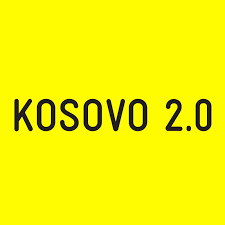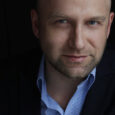“Are we allowed to go in?” a young woman asks her friend, pausing in front of an iron gate on Ibrahim Rugova Street, one of central Tirana’s buzzier stretches. The gate is open, which is strange. It is never open. The path inside leads to a villa nestled in greenery, past an empty fountain and a scattering of people lounging on the grass.
“Not sure,” the other girl responds. They hesitate for a second. “You know what? Let’s walk past subtly [me stil]. Maybe someone will let us in.”
They are not the only ones wondering. The villa, which once housed Albania’s long-time communist party ruler Enver Hoxha, his wife, children and grandchildren, has been off-limits to Tirana’s residents for over three decades. That changed this year.
During French President Emmanuel Macron’s visit to Tirana in 2023, it was announced that the building would be transformed into an artists’ residency program overseen by the French foundation Art Explora. The opening took place the second week in April 2025, exactly 40 years after Hoxha’s death in 1985, with a full roster of open studios from the first crop of artists in residence, performances, panels, workshops and film screenings.
I was invited to the opening to give a lecture on the relationship between Hoxha’s residence and his brutal, often reclusive, dictatorship. Long before it was determined that the building would become an artist residency, I had begun researching its origins in party archives. It was not an easy story to piece together. This research often felt like detective work, a reflection of the regime’s pervasive secrecy and paranoia. It was important to me to expose the jarring contrast between a place of privilege and the hardships endured by ordinary Albanians.
The many lives of Blloku
Hoxha presided over a ruthless regime after World War II, crushing any sign of dissent and purging his closest collaborators for imaginary crimes. He oversaw the demolition of churches and mosques in 1967, eventually enshrining atheism in the country’s constitution. Absurd charges of thought crimes landed thousands in prisons and labor camps. He remained a lifelong admirer of Josef Stalin. At the age of 70, Hoxha dedicated a book to him, titled “With Stalin.”
Since the regime’s collapse in 1991, Tirana has undergone a manic construction boom, and the area surrounding the villa is prime real estate. But before 1991, it was forbidden ground, sealed with armed guards and shrouded in intrigue. Other high-ranking party officials moved to the surrounding houses, which they arbitrarily took from their owners. Over time, people began calling the area blloku i udhëheqësve, the leaders’ block. The name Blloku has endured.
Hoxha saw enemies lurking everywhere, including among his closest collaborators, a paranoid style that has left its mark in Albanian politics.
Life inside this forbidden corner of the capital had its comforts. Party elites were served by a dedicated store, chefs, drivers and guards. High rank came with access to coveted imported goods and dedicated doctors. Some of the leading families intermarried, giving the impression of a tightly knit power clan.
Beneath the veneer of order, however, Blloku was also a breeding ground for suspicion and envy. Hoxha saw enemies lurking everywhere, including among his closest collaborators, a paranoid style that has left its mark in Albanian politics. As powerful figures fell from grace, their villas changed hands.
When the Hoxha adult children began to marry, the family needed more space. Villa 31 was built in the early 1970s as a large extension to an older prewar structure. Architects, engineers and technicians worked in secret, ordering special installations and the latest fixtures from Italy at a time when precious little was allowed into Albania from the capitalist West.
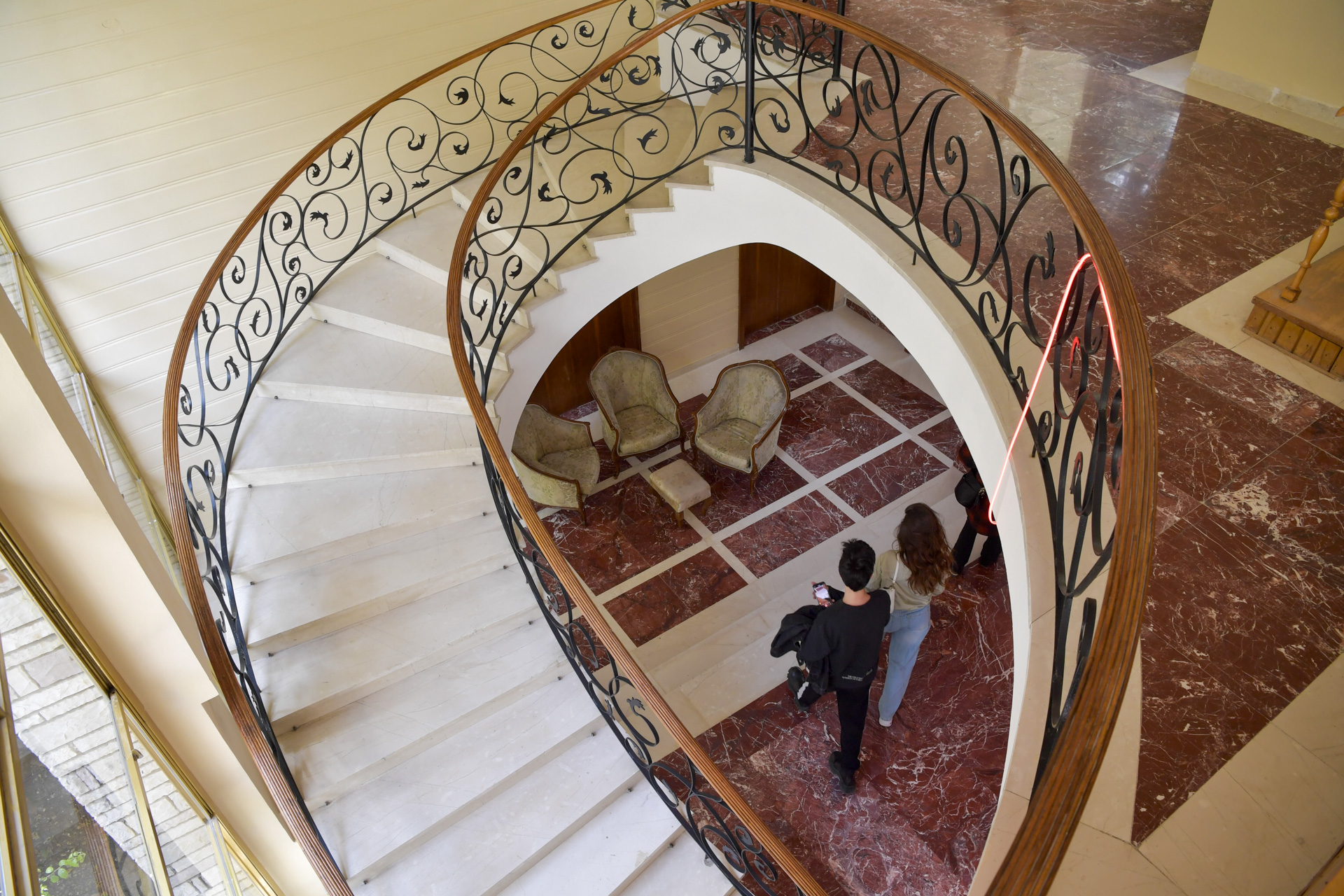
Villa 31 was built to accommodate younger generations of the Hoxha family. Photo: Atdhe Mulla © Vila 31 x Art Explora
The result was a labyrinthine structure and an uneasy blend of architectural styles, designed to accommodate apartments for the multi-generational family, a cinema, a private elevator and other comforts unimaginable to most Albanians at the time. The use of domestic materials — fine wood, marble, stone — was intended as a nod to tradition.
Among Albanians, the place has long evoked conflicting sentiments: curiosity, ambivalence, sadness, anger.
Memory’s tricks
“I thought it would be bigger,” I hear a young father carrying a restless toddler say.
I heard the line a few times. The capital has radically expanded upwards and sideways, and so has the perception of scale. In the 1970s, however, when the average Albanian family was crammed inside a one-bedroom concrete box (two-bedroom, if they were lucky), Villa 31 was the pinnacle of luxury. Memory plays tricks on us. We return to what we think we remember only to find that shapes and dimensions have changed.
This is also a subject taken up by artist-in-residence Armando Duçellari, who was born in 1990, as the regime was about to collapse. “Overlapping Remnants,” his multimodal residency project, revisits the recollections of a family member who worked at the villa in the 1970s, exploring how time reshapes spatial memory.
“He had a personal pool?!” came a woman’s voice from the narrow hallway. “While Albanians were starving!”
Visitors who turned left on the ground floor were met with a large painting by Lumturi Blloshmi (1944-2020). Blloshmi is a last name associated with terror, given the execution of the poet Vilson Blloshmi — Lumturi’s cousin — in 1977 on charges of working and writing against the state. Across from it hung a row of black-and-white photographs by Kostandin Poga, who had the foresight, in the early 1990s, to document Albania’s bleak network of political prisons and labor camps.
Other visitors wandered toward the back, to the now-dry, blue-tiled pool. Hanging on a wall was a vivid handwoven piece by the Kosovo-born artist Jakup Ferri.
“He had a personal pool?!” came a woman’s voice from the narrow hallway. “While Albanians were starving!”

Villa 31 featured a private swimming pool, an extreme luxury for the time. Now, the pool has become a venue for artists. Photo: Atdhe Mulla © Vila 31 x Art Explora
Upstairs, where Hoxha used to work, visitors turned door handles and peeked into closets, often oblivious to the fact that some of the spaces are now occupied by artists in residence: their bedsheets, clothes, toothbrushes, their fresh canvasses and scattered photographs.
“Are we allowed in here?” they asked, again and again.
Paris-based NeM architectes, who were tasked with the architectural transformation, said that they sought to exercise restraint. Whenever possible, they kept original furnishings. New work additions — tables, sleek chairs, minimalist lamps — were all ordered in white, to set them apart from the older inheritances.
Among the latter, I spotted a bulky Czechoslovak JUBILANT radio/record player combo from the late 1950s, with the names of European broadcasting cities marked on the dial. The rise and fall of Hoxha’s dictatorship were defined by sound: loudspeakers, speeches, smuggled music. Listening to a forbidden Western radio broadcast was a dangerous activity, though it proved difficult to police.
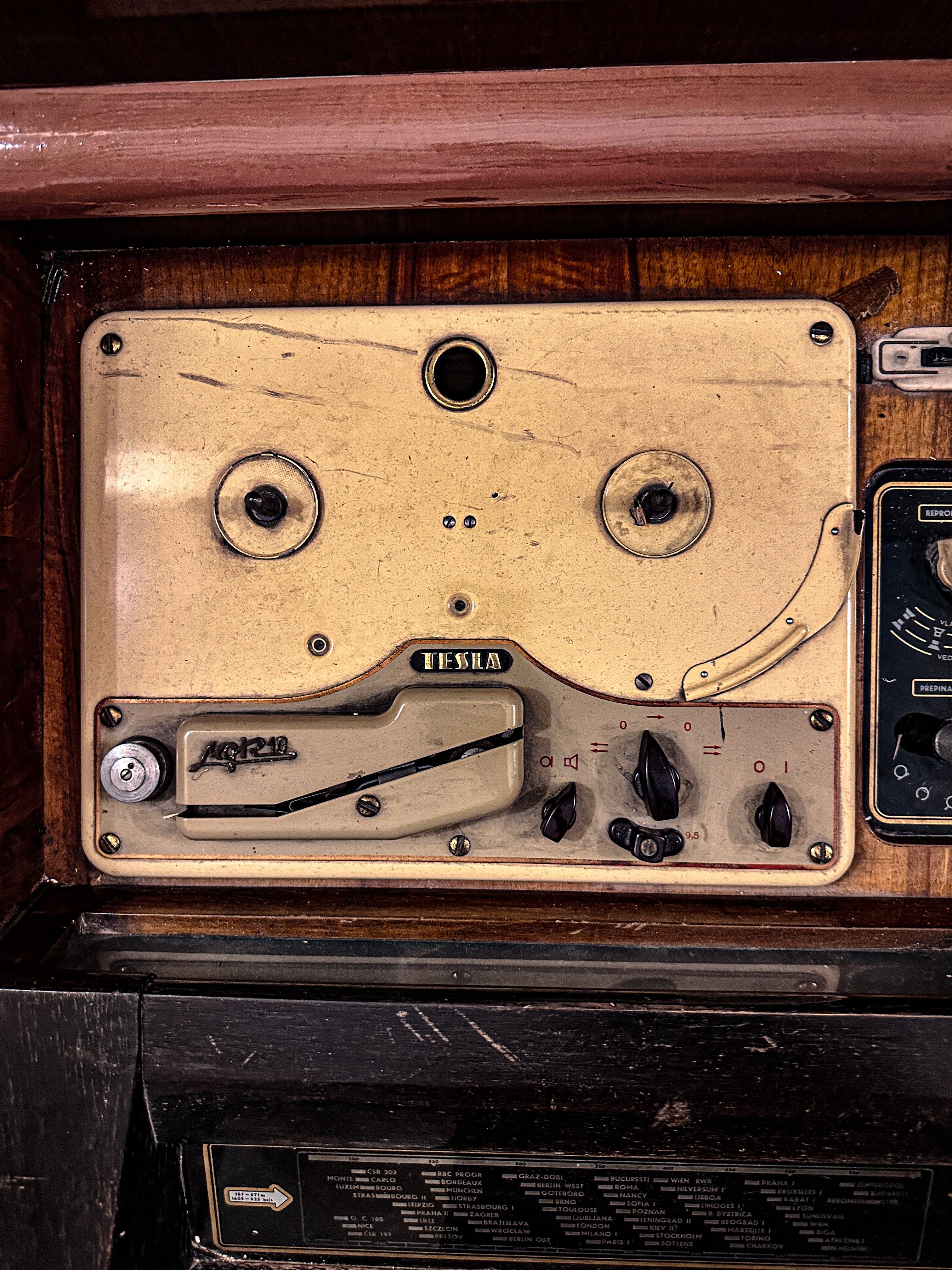
The Hoxha family used a Czechoslovak radio/record player. Ordinary Albanians found to be listening to Western radio stations could get in trouble with the state. Photo: Elidor Mëhilli
On the walls still hang some of the masters of Albanian painting. Andon Lakuriqi’s painted scene of a warrior-dance mesmerized me for days. Set against a glorious mountain, it is a feast of fierce joy. Then there’s Guri Madhi’s stern highlander, Sali Shijaku’s fire-red foundry scene, lush spring landscapes pierced by tiny, whitewashed houses.
A prohibited residence was always bound to generate intense curiosity. Visitors came by the thousands, over long sunny days. And though the villa is not a museum, it is a place of history. It is still haunted — at least for now.
A place of deception
I returned to Villa 31 in the guise of an author who has written about the paradoxes of Albania’s dictatorship. But I was also trailed by another self: the gaze of nine-year-old me, growing up in Tirana on the cusp of the collapse of the regime around 1990 and on a school trip to a nearby park with my classmates. We were allowed to roam, but not too much. Uniformed guards loomed in the distance.
I remember that an air of mystery continued to envelop the building in the 1990s. After the messy collapse of the communist regime, successive governments decided to keep it as a state residence. When Argentine writer Ernesto Sabato came to town to claim a prize in 1996, they offered it to him for the night. He declined, horrified by the thought of sleeping in it.
Faced with the idea of power as a conspiracy, Albanians have always engaged creatively with pain — long before they became the subject of Western interest and mass tourism.
The storytellers among my classmates back then spoke about secret tunnels leading to dangerous dungeons carved beneath our feet. I don’t quite know what to make of the fact that 35 years later, the fixation with what lays underground endures.
“How do we get to the tunnel?” some visitors kept asking, skipping the lectures and the art.
It turns out that the tunnel is flooded with water, which is an irresistible metaphor for Albania’s submerged past, answers that are still elusive.
Faced with the idea of power as a conspiracy, Albanians have always engaged creatively with pain — long before they became the subject of Western interest and mass tourism. They have created and inhabited intricate storylines, often bearing only passing resemblance to the historical record.
This is why I think of the villa as a thought experiment: a kind of imaginary archive. As all archives of authoritarian regimes, it is unreliable. Things inside are not as they seem.
It was the home of a tyrant, yes. But it was something more than a house.
In 1973, as it was being finished, Hoxha launched a vicious campaign against what he declared liberalism in the arts. While his designers sourced furnishings from Western catalogues, he excoriated Western influence in music, art and architecture. Books were banned. (Inside the bowels of the National Library, I once spent days going through wooden drawers packed with index cards bearing the titles of quarantined books, marked with the scarlet letter R for “reserved access.”)
Foreigners arriving in Tirana, including Western Marxist-Leninists who came to Stalinist Albania to learn how to build socialism, were faced with humiliating rituals at the airport: unruly beards and long hair were not permitted. These days, Western tourists, whether they are socialists or not, do not have to worry about barbers at the airport.
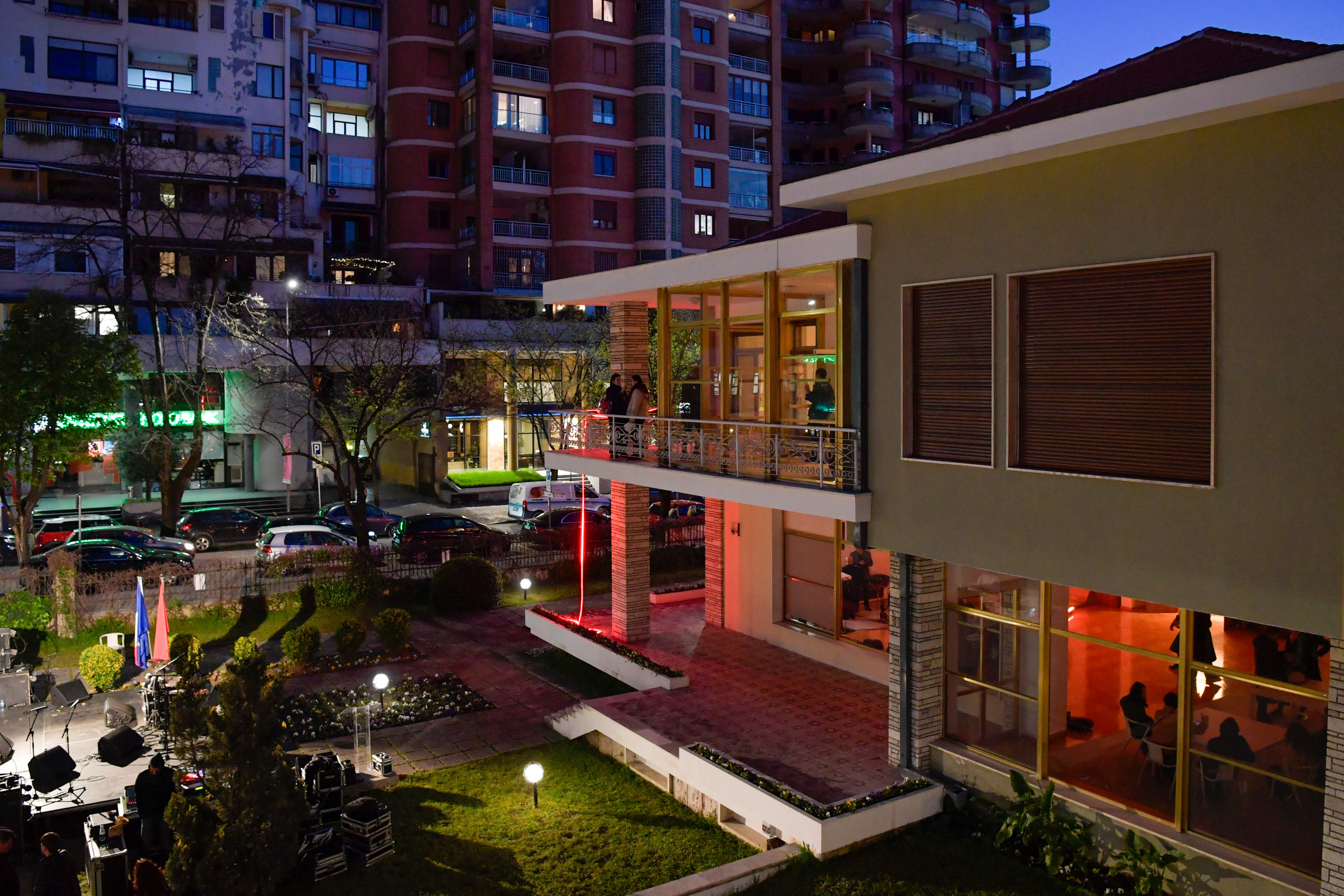
Tirana’s Blloku neighborhood, and the city as a whole, have changed dramatically since the days that the Hoxha family lived in Villa 31. Photo: Atdhe Mulla © Vila 31 x Art Explora
As his health declined, Hoxha retreated to a corner of the villa, morose, jotting down notes and recording his thoughts on the bleak present of Marxism and the elusive world revolution. China — Albania’s financial lifeline up until 1978 — was no longer issuing credits. His country was about to descend into an economic catastrophe, but it was the past that consumed him.
This was the period when a growing number of books appeared under his name. They were labelled “memoirs” and “diaries” but consisted of cobbled texts written by ghostwriters, manipulated archival documents and scrambled timelines. Semi-fictional narratives were put out and consumed as nonfiction — a genre-crossing marketing trick that thrives in Albanian publishing to this day.
“Are we losing the past?” people kept asking me. The past needs to be made usable, they insisted, for the younger generation.
On usable and unusable pasts
I am often confronted with complaints like these when I visit Albania. Families of victims and former political prisoners feel left out of history. “Write about our pain” is a recurring theme.
This seems remote from the priorities of universities and publishing houses in Western Europe and the U.S., where, at least over the past two decades or so, it has been perfectly uncool to work on the crimes of communist regimes like Albania’s. The overriding preoccupation has been to show “transition” to capitalism to have been a series of failures. To make an obscure place like Albania usable in the West has often meant slotting it into the preexisting mental and political frameworks of people over there — not necessarily the scarred inheritance of people over here.
Albania’s reckoning with its past has also been hindered by the fact that formerly secret archives remained inaccessible to researchers into the 21st century. In this vacuum, fabulists have gone unchallenged for decades. Fact-checking is rare; when it comes to narratives about the communist era, virtually anything goes.
But the past is demanding; it is not done making its claims.
I was startled by how many Albanians struggle with the basic facts of the dictatorship. Fictional accounts are routinely passed around as fact. Some people I spoke with expressed frustration that a younger generation, now far removed from the dictatorship, shows little interest in it. But beyond generational differences, the deeper issue is the absence of reliable reference points and critical tools for engaging with history.
In the 1990s, the country was desperate to escape the past. Hundreds of thousands fled to Greece and Italy, and then farther still — crossing oceans, building new lives from scratch. Many of their children have gone on to become celebrated artists, filmmakers and writers in the countries they now call home.
It was moving to meet some of them at the opening of the former home of a man who brutalized his country in the name of freedom and justice.
If this is a kind of epilogue, it’s an unfinished one. Albania looks ahead — to the EU, to its place in a volatile world. But the past is demanding; it is not done making its claims. Sooner or later, the country will have to take more seriously the discipline of looking back.
Feature Image: Atdhe Mulla © Vila 31 x Art Explora
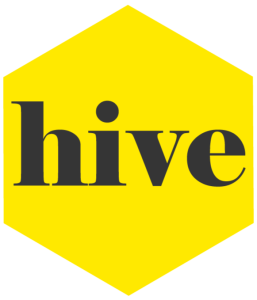 Want to support our journalism? Become a member of HIVE or consider making a donation. Learn more here.
Want to support our journalism? Become a member of HIVE or consider making a donation. Learn more here.
